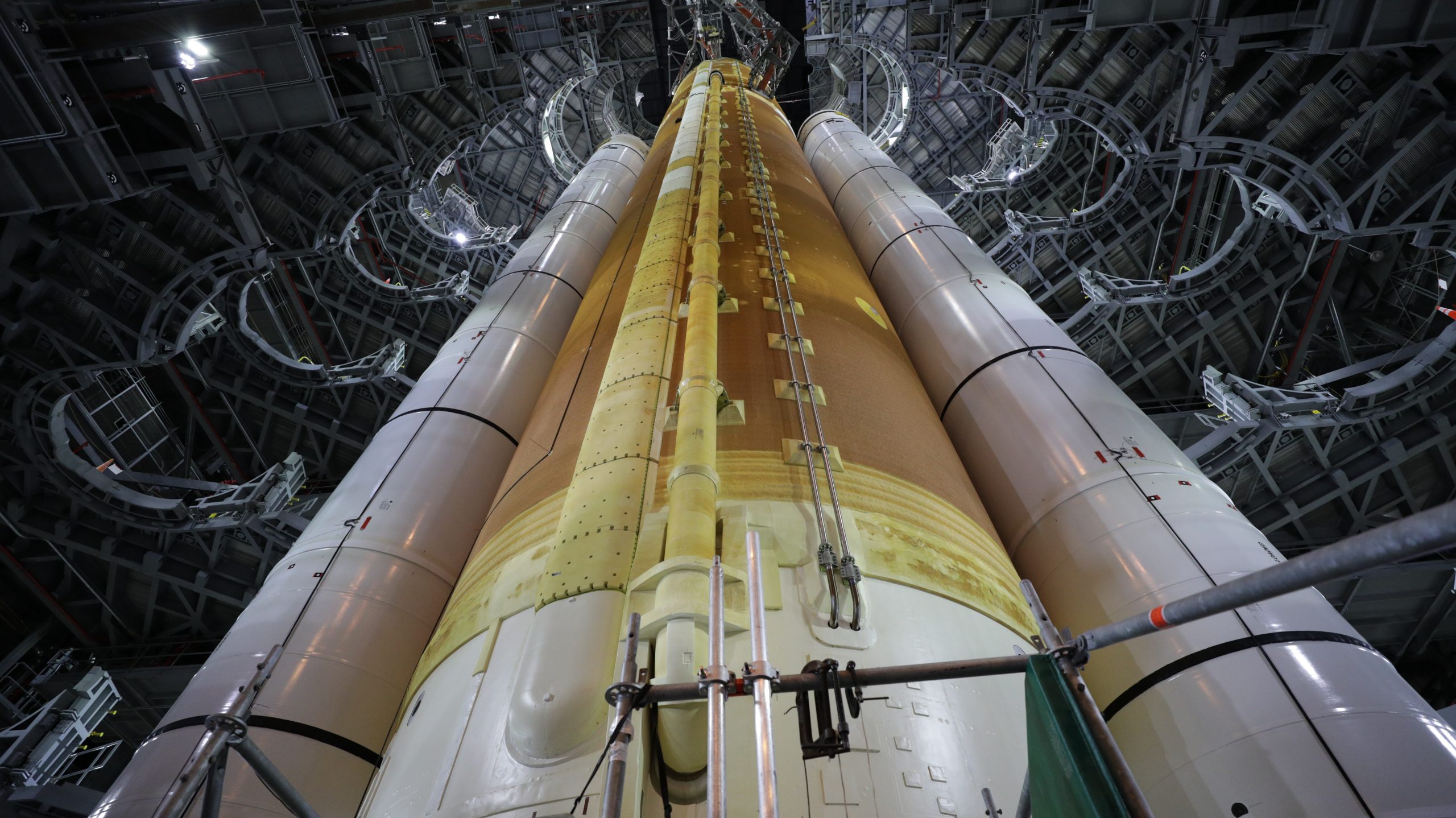
Engineers with Exploration Ground Systems and contractor Jacobs successfully completed the Umbilical Release and Retract Test on Sept. 19 inside the Vehicle Assembly Building (VAB) at NASA’s Kennedy Space Center in preparation for the Artemis I mission.
The umbilicals will provide power, communications, coolant, and fuel to the rocket and the Orion spacecraft while at the launch pad until they disconnect and retract at ignition and liftoff.
“Previous testing at the Launch Equipment Test Facility and in the VAB refined our designs and processes and validated the subsystems individually, and for Artemis I, we wanted to prove our new systems would work together to support launch,” said Jerry Daun, Jacobs Arms and Umbilical Systems Operations Manager.
During the test, several umbilical arms extended to connect the Space Launch System (SLS) rocket and the mobile launcher. They swung away from the rocket, just as they will on launch day.
“This test is important because the next time these ground umbilical systems are used will be the day of the Artemis I launch,” said Scott Cieslak, umbilical operations and testing technical lead.
Teams will continue conducting tests inside the VAB before transporting the Orion spacecraft to the assembly building and stacking it atop the SLS, completing assembly of the rocket for the Artemis I mission.
“It was a great team effort to build, and now test, these critical systems,” said Peter Chitko, arms and umbilicals integration manager. “This test marked an important milestone because each umbilical must release from its connection point at T-0 to ensure the rocket and spacecraft can lift off safely.”
Artemis I will be the first integrated test of the SLS and Orion spacecraft. In later Artemis missions, NASA will land the first woman and the first person of color on the surface of the Moon, paving the way for a long-term lunar presence and serving as a steppingstone on the way to Mars.
